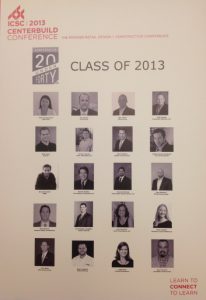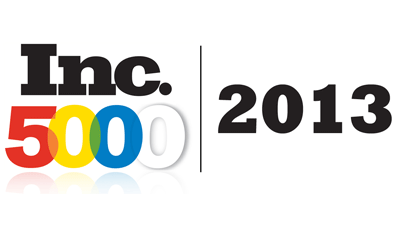by janelle | Dec 17, 2013 | News
The Senior Vice President of Global Engineering at Rabine Group was recently named one of ICSC and Centerbuild’s 20 Under Forty list. Ryan spearheads pavement engineering, maintenance and innovation at Rabine Group, including green solutions, asphalt mix designs, Rabine Pavement Management and more. Ryan is a LEED accredited professional and an active board member on the Rabine Group Foundation, Rabine Group’s nonprofit organization. Ryan’s passion, knowledge and experience make him an irreplaceable member of the Rabine Group team.
Centerbuild’s 20 Under Forty recognizes leaders and innovators in the retail building and construction industry. For more information on ICSC, visit www.icsc.org.


by janelle | Nov 10, 2013 | News
This year, Rabine Group employees put together a ‘Giving Tree’, a collection of gifts to be donated to WINGS, a support center for homeless and abused women and children throughout Chicagoland. This year, Rabine Group provided gifts for 65 people to be delivered just in time for the holidays.
To learn more about WINGS and how you can help, visit www.wingsprogram.com.
by janelle | Nov 7, 2013 | News
In today’s economic conditions, retailers are faced with many challenges including reduced overall funding, restrictions on sizes of projects, increased scrutiny over the quantity of bidders and a slow, steady rise in prices due to material and labor fluctuations. One of the most commonly overlooked or under-considered factors property managers and facility owners experience with their pavement maintenance and capital improvement programs is quality management.
Some owners and managers utilize consultants to audit and measure the performance of their contractors through quality assurance (QA) programs. Others utilize testing firms to perform periodic samples of testing while their contractors perform work. Many take the approach — after an extensive vetting of their preferred contractors — to make a decision based primarily on the competitive prices they receive and rely on the contractor’s quality control (QC) program. While there are many different ways to measure and manage QC/QA programs, there are several effective strategies to focus your efforts when evaluating your asphalt paving programs. Those strategies include: material selection, equipment selection, compaction and construction testing. Let’s first begin by identifying what quality control is and why it is important to you as facilities professionals.
Quality Control (QC)
Quality control represents the activities and measures a contractor takes to manage a project and deliver the results that are specified and expected. Quality management begins on a project well before a contractor starts the construction project on your facility. Factors such as the materials specified for use on the project and equipment selection have significant impact on the success or failure of a project as well as long term operations and maintenance costs. Your paving contractor should manage these factors, among others, in the form of a QC program while constructing asphalt or concrete pavements.
Material Selection
The correct mix design has a significant impact on the cost of a project as well as the longevity of the product throughout its life cycle. It is not uncommon to see mix designs specified for new construction as well as maintenance activities from engineers and consultants that substantially exceed the requirements of the project. These mixtures are the ones utilized on roadways, taken directly from state specifications because the engineers are used to designing public improvements and not parking lot improvements. These DOT mix designs are designed around much higher volumes of traffic and, when they don’t receive the frequency they are designed for, underperform and don’t last as long. Most asphalt plants have developed alternate mixtures designed around lower volumes of traffic and vehicle sizes known as commercial mix designs. Commercial mix designs should be specified to achieve balance with finished surface appearance, traffic loadings and cost. The correct mix design will save as much as 10% of the overall cost of a project and will perform better throughout the life of the parking lot.
Equipment Selection
Having the right equipment on a project can be a difficult thing to measure or analyze from an owner’s perspective. Paving equipment should be self-propelled, capable of placing materials at uniform depths and widths in excess of 12 feet. Pavements are constructed in consecutive passes parallel to each other and the weakest points in the pavement are always where the passes of the paver are joined. These joints are the first to crack and are commonly maintained throughout the life of the parking lot with crack sealing. When undersized paving equipment is utilized, the paving width tends to be narrow (typically 9 feet instead of 12 feet to 14 feet), creating more joints. This can translate to increased life cycle management costs for the owner/manager in the future as referenced the example below.
Compaction
Compaction equipment plays a significant impact in the quality and longevity of a pavement project. Asphalt is typically delivered at temperatures in excess of 300 degrees Fahrenheit; when placed through a paver and compacted, it achieves an optimum density (compaction) within a specified range based on DOT specifications. The temperature at which the material is delivered determines the time that the contractor has to properly compact the product. If the material is too hot or compacted too soon, it will leave roller marks in the form of lines on the pavement. In this example, the pavement, while constructed well and properly compacted, will be aesthetically challenged and lead to dissatisfaction with the final product. Additionally, these roller lines often translate to small puddles in parking lots preventing stormwater runoff from reaching the sewer system. If the material is too cold it will not compact properly and will be weaker than it is supposed to be when finished. In this case, the surface may appear coarse or rough, may not be bonded properly leading to raveling (loose stones on the surface) and could additionally be not fully compacted, leading to a reduced life cycle requiring removal/replacement and an accelerated timeline for resurfacing.
Quality Assurance Example
A 50,000-square-foot parking lot is milled and resurfaced by a contractor at 9-foot widths instead of 12-foot widths for $1.50 per square foot, which equals $75,000. This reduced width translates to over 1,000 feet more of joints created in the parking lot. It is these joints that require crack sealing and over time typically become areas of fatigue (alligator) cracking. Assuming an average cost of $0.65/LF for crack sealing, this would equal an additional $650 per event, which when multiplied by five applications equals $3,250. Additionally, projecting these costs forward to failure in fatigue cracking, assuming an average cost of $3 per square foot for removal and replacement, we can determine the additional cost of replacement: 500 additional LF x 10 feet wide equals 5,000 square feet of pavement replacement equals $15,000. So, in this example, not having the correct paving equipment on a resurfacing has a life cycle cost of $18,250 — or 25% more maintenance expense compared to initial cost because of improper equipment utilization. If your parking lots are larger or smaller, the net impact is roughly proportional and when multiplied over hundreds or thousands of stores will drastically impact your maintenance budgets for years in the future.
Quality Assurance (QA)
Quality assurance represents the activities and measures that are conducted to ensure that the QC measures are effective and working to achieve the desired results. When maintaining a large quantity of parking lots spread out regionally or nationally, it can be difficult to efficiently and effectively manage the facilities and measure the quality of construction activities. Some property managers and facility owners have outsourced consultants to supervise construction and others rely on the contractor’s judgment and reputation to protect their investments. Both approaches are effective, but these strategies either expose the decision maker to risk in compliance with specifications relying on their contractor alone or reduce their operating budget and ability to maintain their pavements through payments to consultants and testing firms. There are two simple strategies that can be easily employed by the property or facility manager at minimal expense and resources. These approaches audit quality from an owner’s perspective that promotes accountability and compliance with specifications and scope of work (SOW).
1. The total quantity of materials required for import (delivery) and export (removal) on any project can be easily calculated using standard conversions for volume (areas multiplied by depth) to weight (tons, cubic yards, etc.). As property or facilities professional, you can require that copies of material tickets, properly labeled and coded from each project, be assembled and submitted upon completion. This provides a means of measuring whether or not the contractor installed the proper quantity of materials and whether or not the finished product will meet or exceed the specified depth on the SOW. Any reduction in thickness below specifications will reduce the life cycle and longevity of the product leading to earlier pavement maintenance and future rehabilitation projects.
2. Post-construction testing of your properties for larger capital programs is an excellent way to audit the quality outside of quantity measurements to manage quality. Testing of asphalt pavements typically require consultants or engineering companies to be contracted. In some instances there are quality self-performing contractors that have the ability to conduct this type of testing in-house. By enabling a program of testing to include compaction testing and pavement coring, you will ensure that the pavement is built properly and consistently as well as audit the thickness of the pavement. Upon completion you will receive a report detailing the compacted thickness of the pavement and the level of compaction achieved for each area tested. This form of testing will ensure that you are measuring the quality in the field, allow you to quantify the quality of construction, and hold your contractors accountable for their work — whether they self-performed the job or utilized a network of subcontractors. These types of programs do not need to be mandated for all projects and are often best implemented at a random frequency to get a true representative sampling of your project sizes, locations and contractors performing work.
Measuring quality is challenging and often overlooked, but is critical to the long term success of any pavement management program. Having a QC and QA program in place will maximize your results and instill accountability in your contractors while providing reassurance that your properties are achieving the maximum value of the improvements and investments you are completing.

by janelle | Oct 29, 2013 | News
Schaumburg, Illinois (October 29, 2013) – The Rabine Group has been ranked on the Inc. 500 | 5000 list for the 3rd consecutive year. Inc. magazine’s Inc. 500 | 5000 list is an exclusive ranking of the nation’s fastest-growing private companies. The list is a comprehensive look at America’s independent entrepreneurs.
CEO of the Rabine Group, Gary Rabine says “To be ranked on the Inc. 5000 list for the 3rd year in a row is a great honor and an amazing accomplishment for the Rabine Group. Our team strives to be world-class in all of the industries we serve. We will continue to deliver innovation to fuel the Rabine Group’s growth.”
The Rabine Group specializes in local and national facility services delivering innovative paving, roofing, flooring, fuel and snow removal services. The Rabine Group ranked #4,538 on the Inc. 500 | 5000 list. Last year, the Rabine Group was ranked #2,468 and in 2011, Rabine Group was ranked #1,477. The Rabine Group has also been recognized by Crain’s Chicago Business as one of the fastest growing fifty companies in the Chicagoland area for the past 4 years.
“Not all the companies in the Inc. 500 | 5000 are in glamorous industries, but in their fields they are as famous as household name companies simply by virtue of being great at what they do. They are the hidden champions of job growth and innovation, the real muscle of the American economy,” says Inc. Editor Eric Schurenberg.
In a stagnant economic environment, median growth rate of 2013 Inc. 500 | 5000 companies is an impressive 142 percent. The companies on this year’s list report having created over 520,000 jobs in the past three years, and aggregate revenue among the honorees reached $241 billion.
For more information on the Rabine Group companies, its services and advocacy, visit www.Rabine.com or call 888-Rabine3.
About the Rabine Group:
Rabine is committed to delivering quality, innovation, and exceeding our clients’ expectations. The Rabine Group is a premiere service provider for paving, roofing, snow removal, flooring oil and gas distribution and other construction needs. The Rabine Group companies include: Rabine Paving, Rabine Paving America, Pavement Solutions, Rabine Utility Paving, Roofing Solutions America, R. Commercial Roofing Solutions, R.W. Roofing Solutions, Crawford Roofing Experts, Rabine Snow Pros, Pipe View, Palatine Oil Company, Rabine Power Solutions and Rabine PrimeComposite as well as the Rabine Group Foundation.
by janelle | Sep 14, 2013 | News
Rabine Group is proud to offer Green and Sustainable roofing and pavement alternatives for facilities. Reducing costs and energy with these environmentally friendly alternatives are very important to your business, but we understand that not everyone has the immediate means to replace their roof or pavement. There are still lots of ways to make your business more cost-effective as well as helping out the environment. Here are a few small ways you can make big impact in greening your office.
1.Bring the Outdoors Indoors.
Open the windows to help cool the office instead of cranking up the A/C. Keeping the windows open can help reduce energy costs while providing your colleagues with some much needed fresh air. While you’re at it, why not bring in a few plants to the office? Having some green around your office can create a positive atmosphere while circulating oxygen, creating healthier and happier employees.
2.Burn Less Gas to Save More Money.
Using less gas is just as beneficial for the environment as it is for your pocket. With gas prices on the rise and no end in sight, it’s becoming more important than ever to find other means or transportation. Public transportation can be a great alternative to those in big cities. Live nearby? Try biking to work! If these alternatives don’t work for you, think about starting a bulletin board for drivers and workers looking to carpool. When all else fails, consider telecommuting. It saves you a trip and keeps some cash in your pocket. Looking to go the extra mile? Pack a lunch. You save money, and there is no need to drive to pick something up. It’s a win-win!
3.Turn Those Lights Off
Some of the biggest wastes in cost and energy occur as a result of unused devices that are left on. Turning off the lights, computers, printers and other devices when leaving a room or going home for the day can save your company a lot of dough. Have trouble forgetting? Think about automatic turn offs that shut off the lights after lack of movement in a room or computer and device settings that go to sleep after fifteen minutes of dormancy. Conserve energy and save a bit of cash!
4. Be Casual
Especially true in the summer, a casual dress code can help your company save on energy costs. Full suits can become very warm to wear, which means the air conditioning gets turned way up in the summertime. By allowing employees to wear more casual and lighter clothing, they are able to dress more weather appropriately instead of having to dress for the office.
5. Go Paperless. Get Digital.
There are many alternatives to print nowadays, and it is important to take advantage of these resources to save on expenses when possible. Think about sending an email instead of printing out that proposal to be approved. Need a signature? Think about accepting an E-Signature instead. All of the little changes eventually add up. Just think of all that money you can save on ink, paper and supplies! When paper is a must, always remember to…
6. Reduce. Reuse. Recycle.
We’ve all heard this one before, but it’s an important guide to remember. Think about setting up recycling bins in your office near printers and fax machines. All that paper can and should be reused. Also remember to recycle those printer cartridges – some companies will even pay you for them! While you’re in the Reduce, Reuse, Recycle groove, why not think about buying refurbished or used equipment and supplies? Along with creating a greener environment, these supplies are often a fraction of the cost of new supplies.
7. Get Real.
Replace paper cups and disposable silverware with the real stuff. Reusable plates, mugs and silverware can save you money in the long run, not having to repeatedly by those products. Do you bring your own lunch to work? Try bringing it in a reusable container. You save money and create less trash!
8. Green Your Cleaning.
Switching to green office cleaning supplies is not only better for the environment, but it can be a great change for your employees. Green cleaning supplies are cleaner for the air and water than many of their mainstream counterparts and can prove to be a better solution for those with allergies or skin irritations.
9. Start a Green Committee
By now, you’re a green fanatic. Do you wish that others in the office shared your enthusiasm? Try starting a green committee! Offer tips and resources your employees can use to green their office and home. Think about starting an incentive program offering perks to employees that “go green”.
Rabine Group’s Schaumburg headquarters is LEED certified. Rabine Group considers sustainability a top priority and has taken steps to make our building environmentally friendly and energy efficient through pervious concrete and porous asphalt, minimizing the “heat island” effect, incorporating Solar Roof Technologies into our own facility’s roof and the steps you see above.



